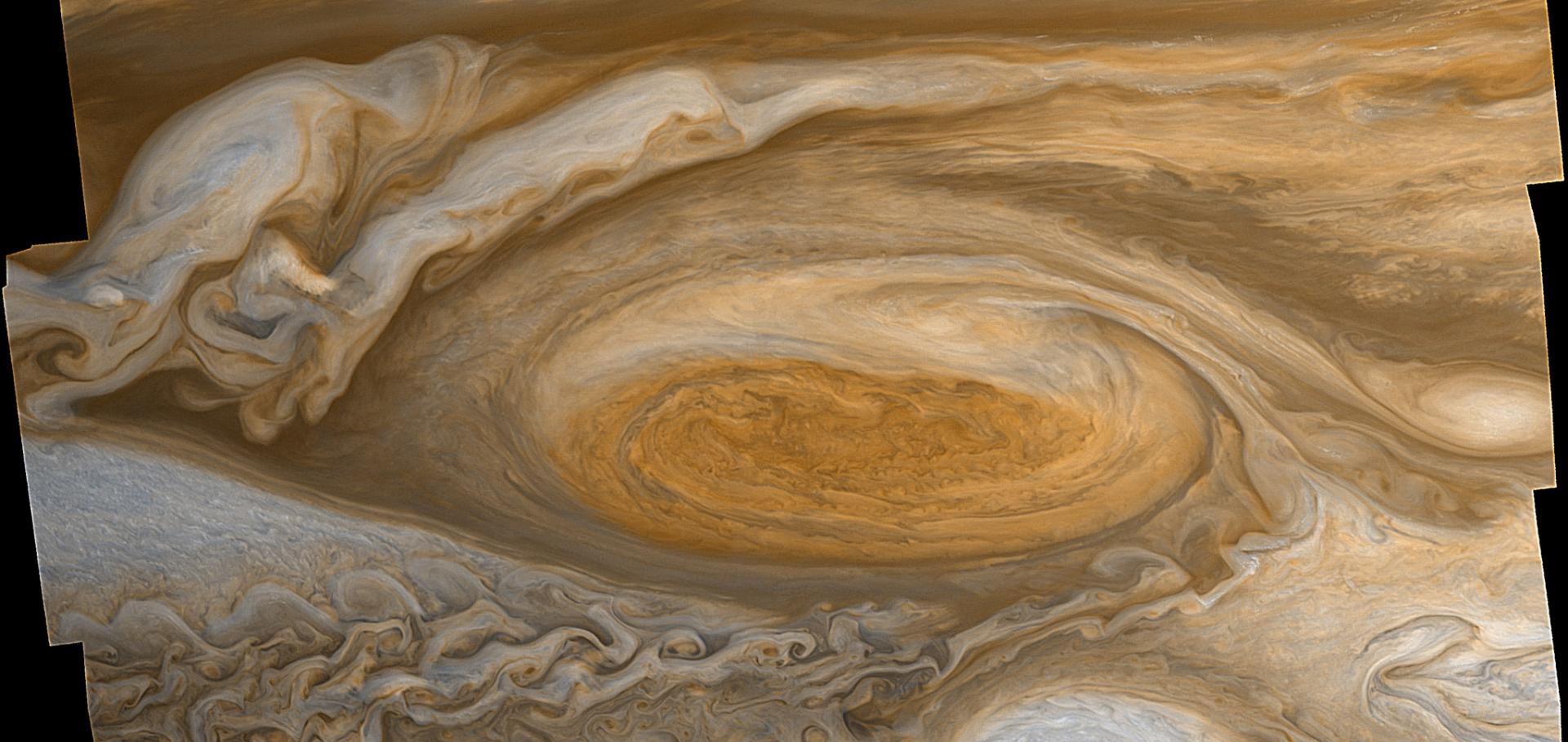Chapter 19 Oscillations in terrestrial planetary atmospheres
Chapter in Atmospheric Oscillations, Elsevier (2025) 399-441
Eddy-driven Zonal Jet Flows in the Laboratory
Comptes Rendus Physique Cellule MathDoc/Centre Mersenne 25:S3 (2024) 1-51
Latitudinal Variation in Internal Heat Flux in Jupiter's Atmosphere: Effect on Weather Layer Dynamics
Copernicus Publications (2024)
Abstract:
Conventional weather layer General Circulation Models (GCMs) typically simulate over a height range extending only a short distance beneath the water cloud base, constrained by computational resources. Due to the limited knowledge about the environment at depth, the conditions specified at the bottom boundary of the domain are usually greatly simplified. Consequently, the influence of deeper atmospheric dynamics on cloud-level phenomena remains poorly understood. Recent observations from the Juno mission have provided new insights into the complex conditions prevailing within Jupiter's deep atmosphere. Given these advances, it is timely to re-evaluate the simple assumptions regarding the deep atmosphere currently employed in weather layer GCMs.In this study, we challenge the conventional approach by introducing latitudinal variations in internal heat flux into a GCM of Jupiter’s atmosphere. Our model incorporates a heat flux profile that decreases from the equator to the poles, with additional complexities such as belt-and-zone contrast and hemispheric asymmetry. Preliminary results show significant deviations in weather layer atmospheric dynamics when compared to constant flux models, particularly in the equatorial regions. We discuss the underlying mechanisms driving these differences, providing insights into the coupling between Jupiter's visible weather layer and its obscured deeper layers. This work represents a step towards developing a more comprehensive GCM for Jupiter, which could also enhance our understanding of other giant planets, by incorporating more realistic conditions at the bottom boundary.Oscillations in terrestrial planetary atmospheres
Chapter in Atmospheric Oscillations: Sources of Subseasonal-to-Seasonal Variability and Predictability, (2024) 399-441
Abstract:
Earth is not the only terrestrial body in the solar system with subseasonal-to-seasonal climate oscillations. Though these worlds are not as well observed as Earth, Venus, Mars, and the Saturnian moon Titan each has multiple modes of variability. Mars climate analyses can be considered the most robust given the large quantity of data available, along with three reanalysis datasets. Venus also has had multiple orbiters monitor the climate, and the Cassini mission studied Titan for nearly a decade. Mars and Titan appear to have annular modes of variability in their zonal-mean zonal wind and in the zonal-mean eddy kinetic energy. Mars’s modes are most similar to Earth’s whereby the barotropic mode in the zonal wind captures latitudinal variation in the jet stream; Titan’s mode in the zonal wind describes vertical shifts in the jet. For both Mars and Titan, the baroclinic mode in the eddy kinetic energy quantifies storm track intensity, like Earth’s mode. Mars’s annular modes relate to the timing of large dust storms, and Titan’s annular modes appear related to methane convective events. Mars also has a Semi-Annual oscillation (SAO) in its mesosphere, with similarities to Earth’s stratospheric SAO. Mars’s zonal mean wind swaps between relative westward and eastward phases during solstices and equinoxes, respectively, due primarily to thermal tides. Separately, Venus has three seasonal modes: A 255-day oscillation in zonal wind which is similar to Earth’s Quasi-Biennial Oscillation (QBO) due to vacillations between when Kelvin or Rossby wave modes prevail; a 150-day oscillation in cloud optical depth which may be related to a cycle in eddy diffusion and radiative cooling in the upper-level sulfuric acid cloud deck; and a 50-day oscillation in cloud albedo which could be due to an as yet undetected oscillation in the source of Rossby waves below 35km altitude. Some of the Venusian modes may be related to a recharge-discharge oscillation of convection that has also been speculated to occur on Titan or exoplanets. Finally, we are beginning to glimpse the climate of exoplanets, and simulations in advance of new observations from space telescopes suggest that tidally locked (showing the same face to their star) planets may also have a QBO. Continued discovery and understanding of climate modes of variability remains predicated on continued atmospheric monitoring of these worlds, both from the ground on Earth, in situ on their surfaces, and particularly from orbit around them. The planetary science community must pay particular priority to maintaining monitoring efforts to ensure a robust understanding of these impactful atmospheric features. Future work should pursue a mechanistic understanding of the modes and seek to quantify how they interact.The dynamics of Jupiter’s and Saturn’s weather layers: a synthesis after Cassini and Juno
Annual Review of Fluid Mechanics Annual Reviews 56 (2024)


